Following the successful Kickstarter campaign and the well-received release of Eiyuden Chronicle: Rising, Eiyuden Chronicle: Hundred Heroes seems to be poised to be a great JRPG.
Its Suikoden pedigree is certainly attractive to many veteran fans of the genre, and Rising has shown that Suikoden creator Yoshitaka Murayama and his team definitely can still deliver a fantastic game.
To know more about the upcoming game, Twinfinite interviewed Murayama-san in Tokyo, Japan.
Murayama-san had a lot to say (through a translator) about the much-anticipated JRPG, working with Kickstarter, his experience in the Japanese industry, and much more.
Giuseppe: When you originally launched the Kickstarter campaign, did you expect to receive this much support from your fans?
Yoshitaka Murayama: I was actually quite uncertain. At one point, I was even considering pushing back the launch of the Kickstarter. Yet, the outcome turned out great and that was a great surprise.
Giuseppe: While it’s great that Kickstarter exists and lets developers connect with fans directly to finance new projects, I personally find it a little bit depressing the fact that, especially in Japan, I’ve seen some big publishers failing to support veteran developers and even their own beloved IPs, especially JRPG ones. Is that something you’ve noticed as well?
Yoshitaka Murayama: When I started Eiyuden, the Japanese gaming industry was in a state that you could define as cold, and it was very difficult to pitch a game like this. In general, it would have been a very challenging thing and many game developers were affected by this situation.
Luckily, with the power of Kickstarter, I was able to prove to publishers that this game has potential by showing the reaction from the users. That was very important.
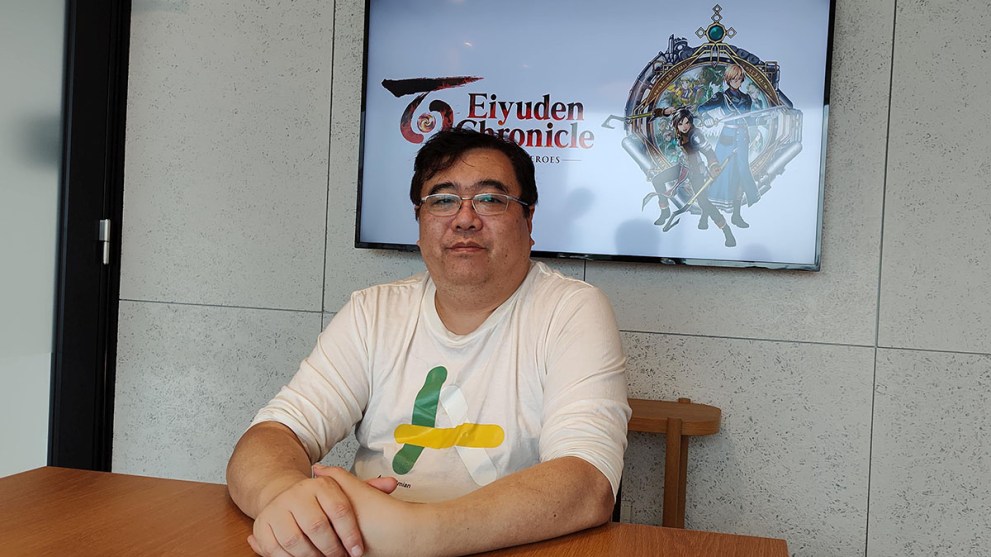
Giuseppe: it’s interesting that today even western publishers are supporting Japanese developers, like 505, when Japanese ones don’t step in.
Yoshitaka Murayama: Historically, Japanese publishers have always had their in-house studios, and those used to drive all of the development and planning of the portfolio. In general, Japanese publishers were not used to supporting independent developers and working with external teams, letting them be the drivers of new projects.
On top of that, the Japanese gaming industry also was not used to letting developers co-own the IP of their games.
Giuseppe: I guess that with your Kickstarter campaign, you proved a few points to a few people. Do you think this Kickstarter actually convinced Konami to remaster Suikoden?
Yoshitaka Murayama: I think at least it made an impact.
Giuseppe: How long have you been thinking about Eiyuden and how long have been planning the game?
Yoshitaka Murayama: I’ve had a very vague idea of the main story and of the mechanics for a long time. About one year before the Kickstarter campaign, those ideas began to gradually form into more concrete plans.
Giuseppe: This is interesting. When I interviewed you at Tokyo Game Show 2019, you told me you had something planned. Was it Eiyuden?
Yoshitaka Murayama: Yes. At that time a certain level of planning was already going on.
Giuseppe: So I guess I was among the first you told about this (laughs). Speaking about Eiyuden Chronicles: Rising, it has a completely different gameplay system. Why did you plan it as an action JRPG while the main game is turn-based?
Yoshitaka Murayama: First, let me explain Rising’s background: when we launched the Kickstarter campaign, Hundred Heroes would take three years to develop, and that is too long to keep the users’ interest. Rising was promised during the campaign and intended to retain the players’ interest during the long development process.
Of course, Rising had to be developed on a limited budget as well, so I felt that a mini-version of a JRPG wasn’t very realistic to create. Instead of doing that, given the conditions, I felt that an action game was more reasonable and realistic.
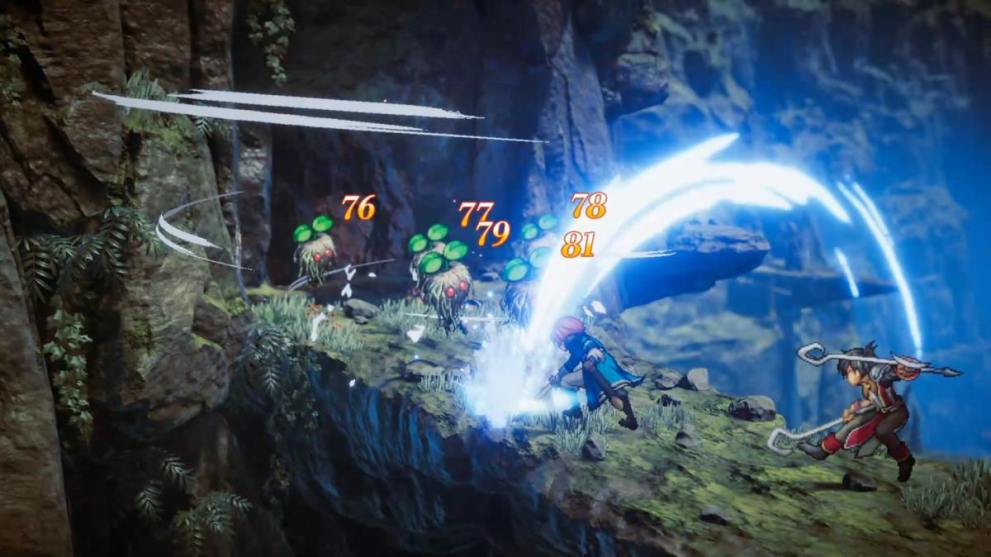
Giuseppe: How do you feel about the reaction of the press and the public to Rising? I think it has been received very well. Also, did you learn anything from its development that you’re going to use in the main game?
Yoshitaka Murayama: In general, I think we got very positive feedback from users. I also noticed that many were very passionate about Rising’s characters coming to Hundred Heroes. I’m very happy about the response from the users.
I have geared the design toward fans of classic JRPGs, so I was very cautious about the balancing and the difficulty level. I did not want to make it overly difficult because many fans aren’t used to playing action games.
However, during development, some of the developers were arguing that we should make the game harder and more challenging. I understand where they came from, and looking at some of the feedback from the users, I think the basic game should be geared toward everyone, but one of the things I’ve learned is that it’s always good to provide more challenges for some users, perhaps additional difficulty modes.
Giuseppe: Despite the fact that Rising was more of a bonus for Kickstarter backers, I’ve personally heard about many who purchased it on its own, without having backed the original campaign. Do you think Rising actually helped bring more eyes to the main game and increase awareness about the Eiyuden project as a whole?
Yoshitaka Murayama: My goal is to awaken and help develop the fanbase of JRPGs, and I think it’s very good that new fans have joined the Eiyuden fanbase, so I’m happy about what happened with Rising.
Giuseppe: Is development progressing smoothly?
Yoshitaka Murayama: Of course, we have faced challenges in the past, but now the development of the game is in the mass-production phase.
Giuseppe: You seem to have included some innovation in the way your game looks. Battle scenes have a completely different perspective compared to what I’m used to seeing in other turn-based JRPGs. How did you come to this design?
Yoshitaka Murayama: From the beginning, one of the core concepts of the game was to fuse pixel art with modern computer graphics technology. For example, we use effects like depth of field and we animate the pixel art visuals in a very lively way.
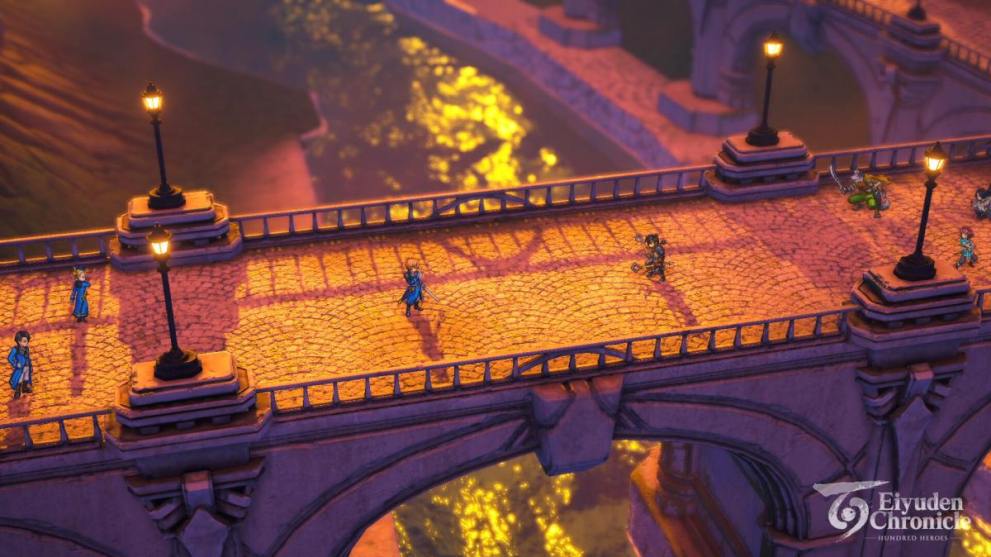
Giuseppe: What’s your favorite aspect of this production, something that makes you happy when you see it on the screen when you look at the game? On the other hand, was there something that was particularly challenging?
Yoshitaka Murayama: My favorite part of the game is seeing 2D pixel characters animated in 3D environments. For instance, there are huge 3D monsters in the background and 2D characters leap to them to attack them. It’s a perfect merging of 2D and 3D. That element is definitely one of my favorite aspects of the game.
Speaking of challenges, the 3D graphics for the environments weren’t easy to create. On top of that, camera control is very challenging. I want to achieve a very natural camera control supported by a certain level of AI technology. It’s a very delicate balance and I’m making a lot of requests to the programmers to make it happen.
Giuseppe: One of the interesting and perhaps challenging aspects of having a Kickstarter is that you have to keep your users in the loop, enabling a higher level of transparency compared to traditional game development. How do you balance this constant flow of information with preserving surprises and plot twists?
Yoshitaka Murayama: It’s true that controlling information is not easy. Interestingly, I often go to our Discord server, and I hear from the users that they also do not want to be spoiled about the plot before they actually play the game. They also want these aspects to remain a secret for now. This is interesting to me.
I’m controlling the reveals with a very delicate touch. For instance, I reveal a character’s visuals but withhold information on how they’re going to appear in the game or what role they’re going to play. I’m being very careful about the information we share.
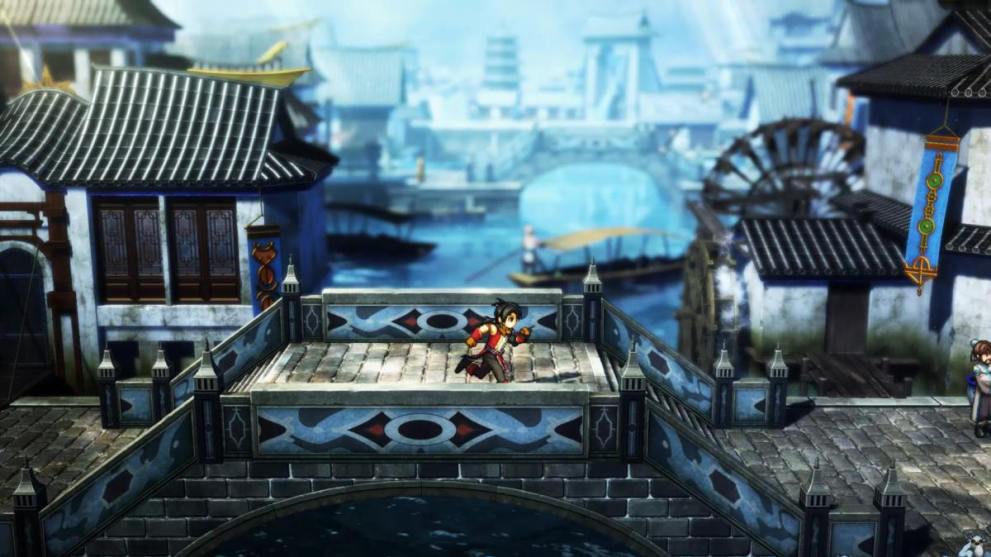
Giuseppe: You built a studio with some developers who have worked with you before, veterans from the time of Suikoden, and I imagine younger developers. How did you balance this? Did you actually hire many younger devs to help with creating the game?
Yoshitaka Murayama: The size of the team is 50 to 60 people, so obviously we couldn’t form such a team just with veterans. We had to mix veterans up with younger people.
Obviously, the core members are industry veterans from the time of Suikoden or other people who worked for Konami back in the day, but there are young people. For example, a younger guy is working on the graphics of the monsters.
I think it’s important to align the sharing of information and the technical level across the team. That’s how we balance the work output with team members of diverse ages.
Giuseppe: Do you find it stimulating to work with younger team members with diverse levels of experience?
Yoshitaka Murayama: Yes. It’s very stimulating to work with younger people, for instance, we have a younger planner.
However, my current role is more on the side of writing the game’s scenario and higher-level supervision of the game’s design, so I don’t always give direct instructions to all the team members. Yet, it is good and stimulating to interact with younger people in the studio.
Giuseppe: You’ve written many stories in your career. Is it a challenge while you write a new story, to avoid bringing back elements from older stories you’ve written before? Or perhaps that’s something you actually like to do?
Yoshitaka Murayama: When you work on the story of a game it’s very common that you don’t get to implement all of the ideas that you have. Usually, you have to cut a lot of your ideas, and only a part of what you initially envisioned makes it into the final game.
As a result, since I’ve worked on many games in the past, I have a sort of toolset of unused ideas. So, of course, I’ve been leveraging these ideas that I did not get to use before during the creation of Eiyuden’s story.
While I rarely use ideas that were implemented in older titles, I do use some that were initially devised for these games but weren’t actually used.
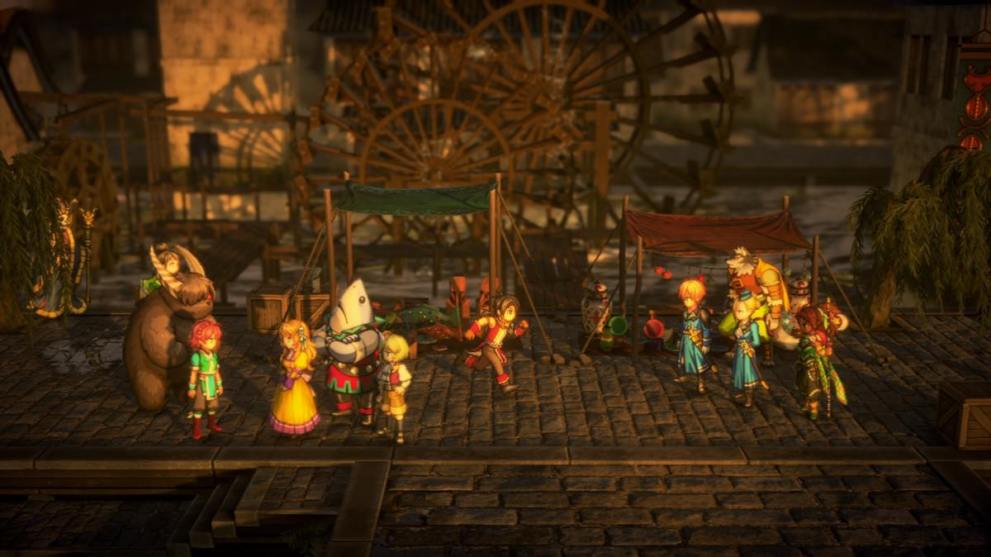
Giuseppe: Do you have any message or insight that you’d like to share with your fans, especially those in the west?
Yoshitaka Murayama: The phase of development in which we had to engage in trial and error is already over. Now we’re in a phase in which we go straight toward the objective with mass production of assets and implementations.
Some areas of the game already have very solid gameplay and overall, I feel very positive about what the game is looking like and what it’s going to look like in the near future. So you can count on us, and I believe we’ll be able to provide you with a really good game.
I believe that JRPGs are a very complex and deep game genre that can entertain a wide audience of people in many ways. I really want Eiyuden Chronicles: Hundred Heroes to stimulate the JRPG genre and draw even more fans to the genre, contributing to the growth of JRPGs. This is my hope.
Eiyuden Chronicle: Hundred Heroes is coming in 2023 for PC, PS5, PS4, Xbox Series X, Xbox One, and Nintendo Switch. You can check out how good it looks in the latest trailer.
Eiyuden Chronicle: Rising is currently available for PC, PS4, PS5, Xbox Series X|S, Xbox One, and Nintendo Switch.

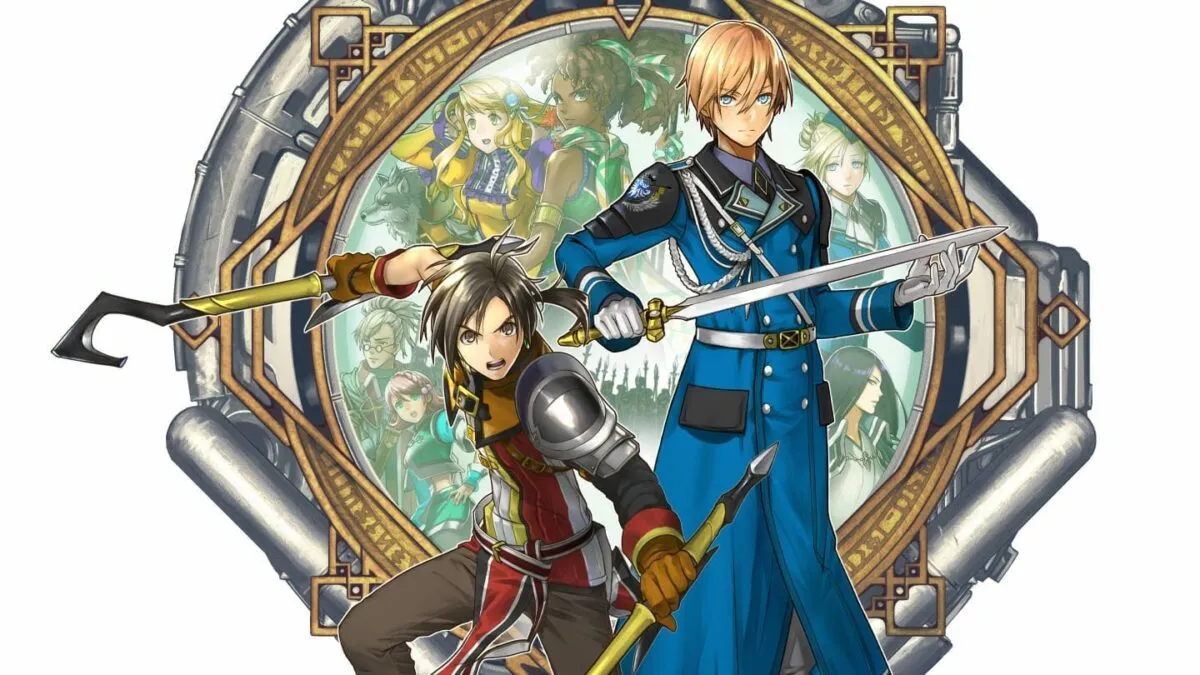











Updated: Nov 2, 2022 12:26 pm